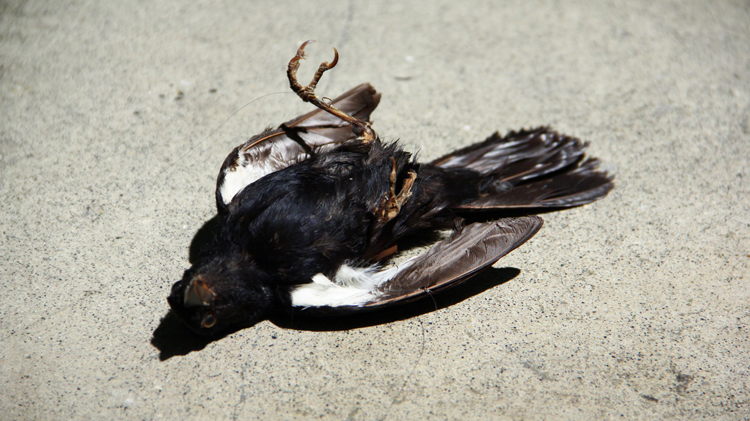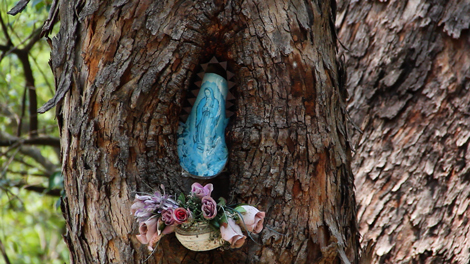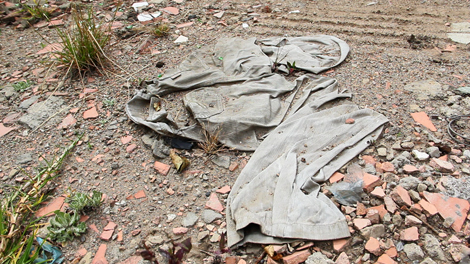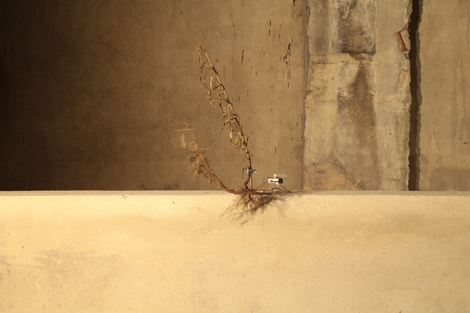Octavio Paz wrote, “this hour has the shape of a pause.” Adriana Salazar’s videos situate us inside such a pause, places where we are in nature while watching human artifacts become nature.
I met Salazar in Mexico City this past November, though I knew of her work from 2013 and 2014 solo exhibitions at Grand Central Art Center and UCR ARTSblock and her inclusion in the 2013 California-Pacific Triennial at OCMA. Through mutual friends, we connected and spent the day gallery-hopping in the vast and beautiful city where Salazar is completing her PhD in the Faculty of Arts and Design at Mexico’s renowned UNAM (Universidad Nacional Autónoma de Mexico).
The Panteón de Dolores, the largest cemetery in Mexico City, is the setting for Salazar’s 20-minute video, Algunas cosas se mueven, otras no (Some things move, others don’t), of 2012. Lote #1, from the same year, moves us through an abandoned lot in her home city of Bogotá prior to its being expropriated for urban development. She shot the video days before the lot was closed to become “part of a plan to build a large avenue that will eventually go through it,” she explained in an email.
Salazar’s acute eye for the overlooked and the melancholic grace of decay brings us into a realm where we can move at a softer pace, where nature’s sounds overtake the human in an aural parallel to her videography. The occasional sound of a broom or a car horn is beneath the birdsong and the wind sound. Like these sounds, objects are portrayed as secondary to nature—such as the gray jumpsuit from Lot #1, which has become flattened into soil.
The decaying graves of Some things move or the discarded objects of Lot #1 are both remainders and reminders of human life, but they’ve taken on new states of becoming as they quietly disintegrate. This is the heart of Salazar’s project: she reveals how remains—whether human or object, loved or unloved—are absorbed into nature, into something else. Stasis and change, stillness and motion—these dualities are eliminated by the artist to converge into another manifestation. This subtle morphing between life and death is echoed in her 2014 artist’s statement: “Through questioning our rituals and cultural practices we become aware of our mortality, while we realize that we are also part of a layer of dirt in the changing surface of the earth.”
Salazar’s videos reveal the subtlest of gestures: the breeze blowing scraps of ribbon or a balloon at a gravesite, the branch of a tree or a weed in motion. These bits and pieces arrest us in a way they rarely would on the daily. This attention to detail is reminiscent of the artist’s installation works, such as “Pájero #2 (Bird #2)” (2011) or “Vida quieta (Still life)” (2012) where miniature motors and nylon line make the smallest of gestures into monuments.
This artist guides, not forces, us to observe a stillness that is always in motion. We notice how a simple ceramic vessel picturing the Guadalupe has been absorbed into the knot of a tree. Through such refinements of vision, Salazar traces the slow recovery of humanity by nature. The weeds seem to be winning and we are strangely glad.
See Adriana Salazar’s video Algunas cosas se mueven, otras no (Some things move, others don’t), 2012, on our website, artillerymag.com







